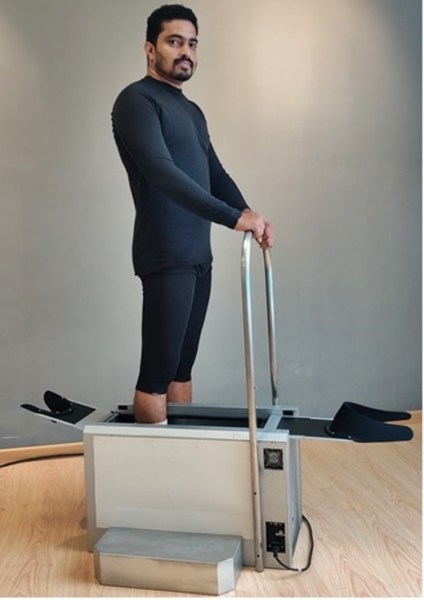- India
- International
New shoe sizing system proposed for Indians: What is ‘Bha’ and the need for it?
A recent survey concluded that a single shoe sizing system could apply to Indians. Why was a need for it felt, and how would it differ from the existing footwear sizing systems?
 With an Indian user now owning an average of 1.5 footwears each and India being the world’s biggest population, it is one of the world’s biggest markets and manufacturers of shoes. (Via Pixabay)
With an Indian user now owning an average of 1.5 footwears each and India being the world’s biggest population, it is one of the world’s biggest markets and manufacturers of shoes. (Via Pixabay)A pan-India survey on the feet sizes of Indians was recently carried out as part of a larger project for developing an Indian sizing system for footwear. Proposed to be named ‘Bha’ (भ ) to represent Bharat, it could form the basis for manufacturing footwear in India. Upon its implementation, Bha will replace the existing UK/European and the US sizing systems.
What did the survey find?
Initially, the hypothesis was that at least five footwear sizing systems would be required for Indians to be inclusive of various ethnicities. Prior to the survey, it was thought that people from northeast India, on average, had smaller feet sizes compared to the rest of India.
A survey was conducted between December 2021 and March 2022, covering 1,01,880 people across 79 locations in five geographical zones. 3D foot scanning machines were deployed for understanding the size, dimensions and structure of an average Indian foot.
It found that the growth of the foot size of an average Indian woman peaked at the age of 11 years whereas that of an Indian man peaked at about 15 or 16 years.
 3D foot scanners were used to obtain the dimensions, size and structure of over one lakh Indian users. (Photo via CLRI)
3D foot scanners were used to obtain the dimensions, size and structure of over one lakh Indian users. (Photo via CLRI)
Overall, Indians’ feet were found to be wider than that of Europeans or Americans. Due to the narrow footwear available under the UK/European/US sizing systems, Indians have been wearing footwear which are a size bigger than required.

Many Indians were found to be wearing extra-long, ill-fitted and tight footwear. In the case of high-heeled women’s footwear, wearing a bigger size was both inconvenient and a cause for potential injuries.
For men, shoelaces were tightened much more than ideal to ensure the shoes were not loose fitting. This affected the normal flow of blood for the wearer.
By wearing footwear not designed according to their feet’s specifications, Indians have been vulnerable to injuries, shoe bites and compromised foot health – especially among elderly women and diabetics.
A statistical analysis of the massive data obtained from the survey concluded that a single shoe sizing system could be devised.
Why was the need for an Indian shoe sizing system felt?
The British introduced UK sizes in India before Indian independence. According to it, an average Indian woman wears footwear sizes between 4 and 6, and the average man between 5 and 11.
Since there existed no data on the feet structure, size, dimensions of Indians, developing an Indian system had been difficult and was never undertaken.
With an Indian user now owning an average of 1.5 footwears each and India being the world’s most populated country, it is one of the world’s biggest markets and manufacturers of shoes. Industry stakeholders also said that an estimated 50 per cent of the footwear ordered online were rejected by customers. With Bha, both the users and the footwear manufacturers could benefit.
What are the survey’s recommendations?
Bha proposes eight footwear sizes: I – infants (0 to 1 year), II – babies (1 to 3 years), III – small children (4 to 6 years), IV – children (7 to 11 years), V – girls (12 to 13 years), VI – boys (12 to 14 years), VII – Women (14 years and above) and VIII – Men (15 years and above).
For commercial purposes, initially manufacturing of footwears ranging in sizes III – VIII would be sufficient. Footwear manufactured as per Bha could give nearly 85 per cent of the country’s population the right fitting and better comfort.
The biggest advantage of adopting Bha would be that footwear manufacturers would need to develop only eight sizes as against the present 10 sizes (English system) and seven sizes (European system). In addition, half-sizes would not be needed.
The shoe last size will have an additional 5mm foot length. The Bha system will also be wider at its girth than the footwear currently available commercially.
What is the current status of Bha?
The Chennai-based Council of Scientific and Industrial Research–Central Leather Research Institute (CSIR–CLRI) conducted the survey. It submitted its recommendations to the Department of Promotion of Industry and Internal Trade (DPIIT), which comes under the Union Ministry of Commerce. The DPIIT has forwarded them to the Bureau of Indian Standards (BIS), which is the Indian authority to implement this sizing system, for approval.
Since Bha will completely overhaul the existing sizing systems, the departments have suggested that footwear manufactured as per Bha size standards should be given to users for trial, testing and feedback. Bha is expected to be implemented sometime in 2025.
EXPRESS OPINION
Jun 12: Latest News
- 01
- 02
- 03
- 04
- 05





























